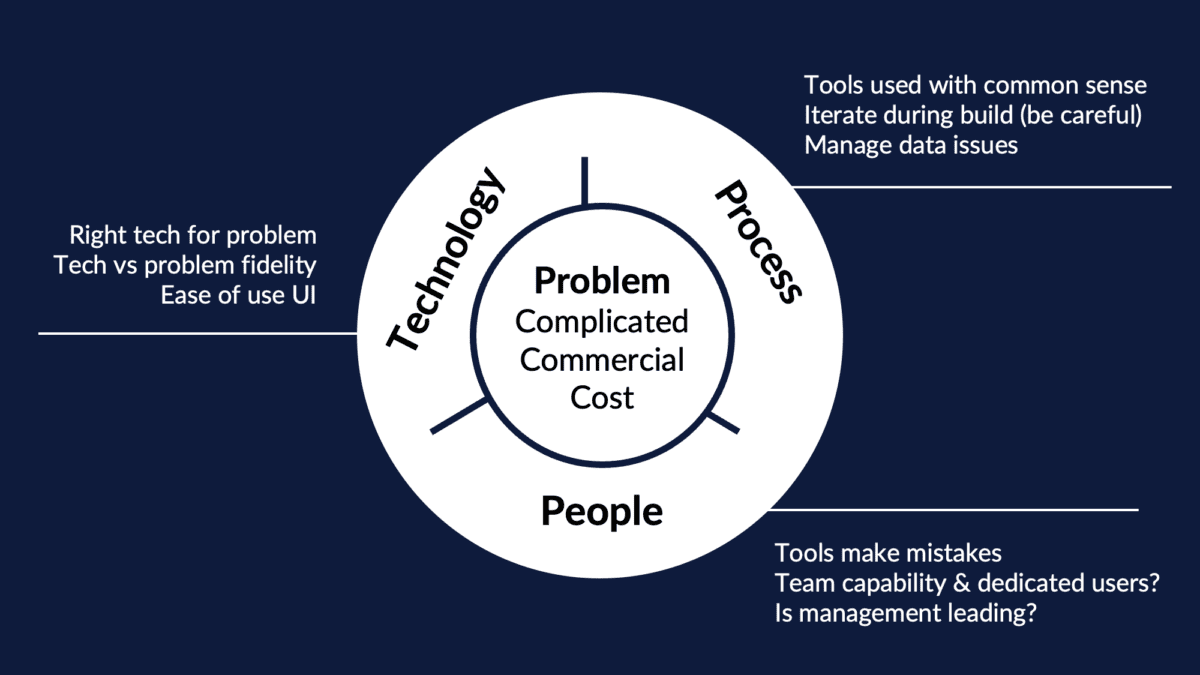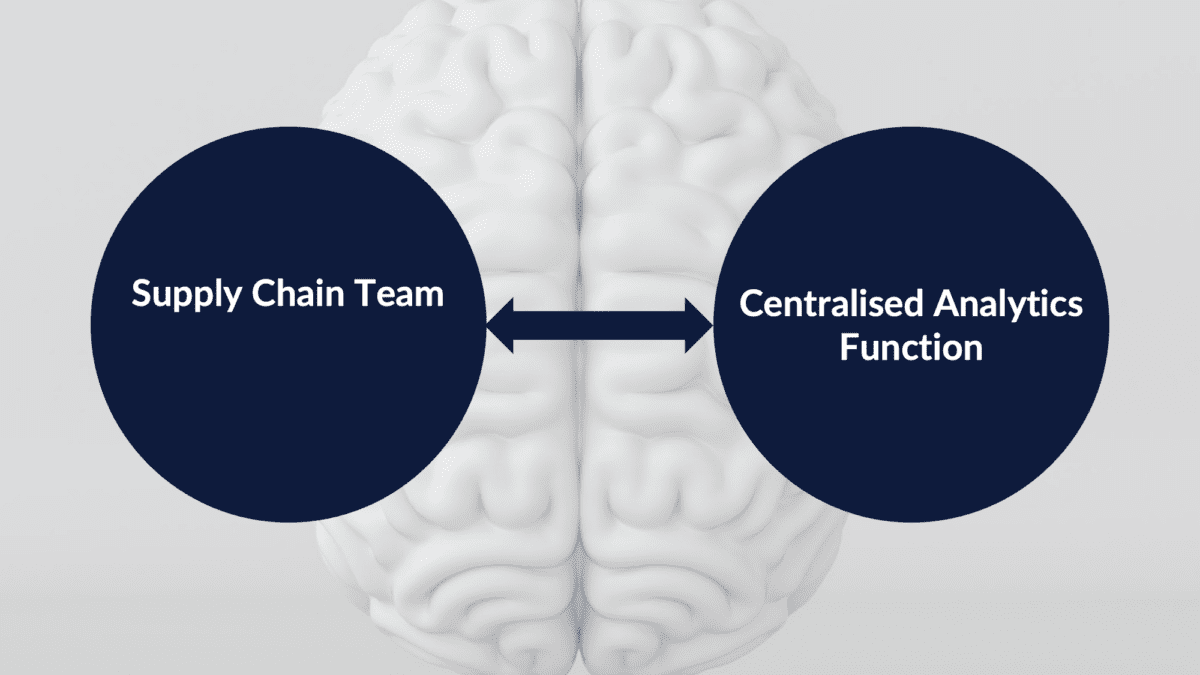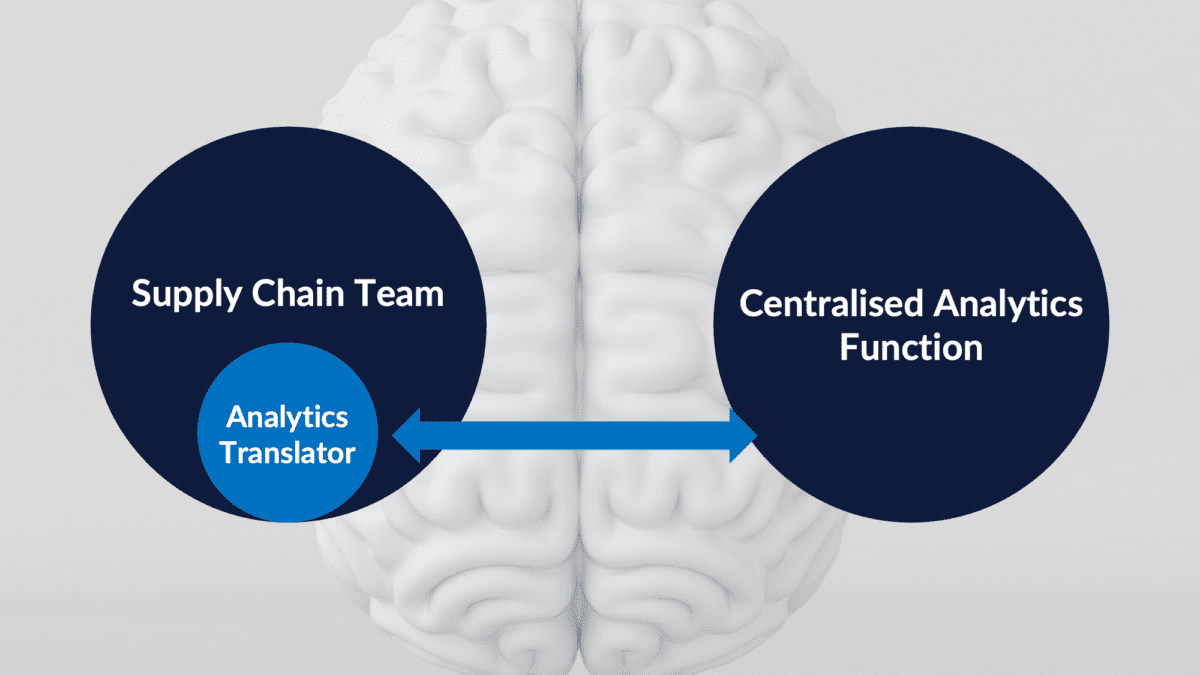Evan Shellshear

Only 15% of AI investments succeed. An AI translator could help the other 85%
COVID was the best and worst of times for companies. The shock and economic turmoil were experienced by all organisations but in the upheaval not all companies were equal.
A true story: One company – a large retailer selling clothing goods – which had begun its data journey long ago acquiring key technologies, missed its greatest opportunity by not leveraging its digital assets. Mismanaging supply chains and making slow manual decisions cost it millions in sales, while its peers thrived during lockdown.
Another company – also employing thousands of people and operating in the agribusiness sector – doubled down on its AI bets and used AI to intelligently redirect goods as whole countries locked down, making fast decisions to find new customers and new markets. It generated higher than usual profits by serving short term clients with higher prices.
Both companies were digitally empowered, both had up-to-date AI technologies, and both had a problem that could easily leverage those technologies. So what was the difference between them? A key factor was the successful outfit employed what I call an ‘AI translator’ and placed them strategically in their business. For the world to truly leverage the power of AI, we are going to need more people with these skills.
The new digital divide
This fail or thrive outcome was replicated throughout the pandemic as companies were forced to rapidly accelerate their digital journey.
The digital survivors leveraged data and analytical (AI) tools to make better decisions in high pressure environments. They ran more scenarios, optimised more possibilities and predicted more future states – they managed the uncertainty better.
The companies that failed may already have had digital capabilities but lacked the ability, quality data or confidence to leverage these capabilities, including AI tools, to make data-driven decisions in those challenging times.
At Biarri, we have been building AI tools for hundreds of companies for over a decade. Using this customer network, I asked both successful and unsuccessful companies questions like: How do they manage uncertainty? How do their teams use and interact with data and AI tools? How do they identify suitable problems? And what do they do when things go wrong with their AI tools? I leveraged design thinking techniques to unpack this wicked problem. A clear set of factors emerged that separated the companies that were able to successfully leverage AI tools from those that clearly struggled. Three key factors – technology, people and processes – interact with the problem an AI system is designed to solve:

My research shows that the two key aspects an organisation must get right are the Problem and the People side, otherwise they are almost guaranteed to fail. And it is the People challenge that seems hardest to fix, which is where AI Translators enter the picture.
AI Translators
The most important trend separating the digital survivors from the digital failures, was the existence of team members who were domain experts and who were dedicated users of AI tools – in other words, they had both the domain knowledge and analytical skills.
Silos are common in organisations, very typically in IT teams, and in many companies AI teams are facing a similar fate. This can lead to the trap of creating a centralised analytics function (like an IT team) that advises other parts of the organisation.

This siloing of AI functional capability must be avoided.
For example, another client who successfully outperformed their peers during COVID also had deep analytical skills embedded in the functional silo. Also operating in the retail sector, they continued to price their goods as per the outputs of their AI engine without losing faith in its recommendations but leveraged it to run more scenarios and reduce uncertainty. The AI translators in this company reported to their functional silo but maintain their connection to the analytics professionals in the organisation to ensure a consistent set of practices and sharing of critical knowledge, especially during those difficult times.

Where do you find AI translators?
A friend, who had recently moved from a digital failure company to a digital survivor, told me that her previous company’s digital transformation strategy was to simply let the older generation retire and be replaced by millennials. For AI and analytics, waiting will not work: we need to act now.
The challenge for organisations now is to find their AI Translator. They can be either:
- Someone with analytical skills and working in functional team (e.g. supply chain) or
- Someone with domain knowledge, trained in AI technologies
I have seen both. Take the example of clinical data analysts, a role that is becoming more common at large hospitals. These are typically people who are trained in mathematics and computer science but who have also completed training in medicine or a related undergraduate degree. They work with functional teams to improve results such as theatre scheduling, emergency department patient flow, management, or staff rostering.
These ‘translators’ play key roles in trouble shooting the inevitable problems with AI engines by understanding how such black boxes work and where to look for issues.
Universities are now stepping up to meet this critical capability with degrees in fields like Business Analytics, which aim to train AI translators and fill this critical gap.
Not lost in translation
Spurred by COVID, investments in AI technologies are accelerating worldwide, reaching $91 billion in 2021. With over 85% of such investments failing, a key role has materialised during the past years to address such failures – that of an AI translator. As more people acquire these AI translator skills, we will see this 85% failure rate turn into an 85% success rate.
The author will be hosting the Biarri Applied Maths Conference at the University of Sydney on November 29, delving into topics such as the above. Find out more about the conference topics and speakers or to register for free to attend.
Image: Christina Morillo
Dr Evan Shellshear is the Managing Director and Group CEO of Ubidy. He has developed and designed AI tools for a variety of industries and across the globe.
Share
We believe in open and honest access to knowledge. We use a Creative Commons Attribution NoDerivatives licence for our articles and podcasts, so you can republish them for free, online or in print.







